Racial Differences in the Impact of Elevated Systolic Blood Pressure on Stroke Risk
 Por: George Howard, DrPH; Daniel T. Lackland, DrPH; Dawn O. Kleindorfer, MD; Brett M. Kissela, MD; Claudia S. Moy, PhD; Suzanne E. Judd, PhD; Monika M. Safford, MD; Mary Cushman, MD, MSc; Stephen P. Glasser, MD y Virginia J. Howard, PhD. JAMA Intern Med. 2013;173(1):46-51.
Por: George Howard, DrPH; Daniel T. Lackland, DrPH; Dawn O. Kleindorfer, MD; Brett M. Kissela, MD; Claudia S. Moy, PhD; Suzanne E. Judd, PhD; Monika M. Safford, MD; Mary Cushman, MD, MSc; Stephen P. Glasser, MD y Virginia J. Howard, PhD. JAMA Intern Med. 2013;173(1):46-51.
Between the ages 45 and 65 years, incident stroke is 2 to 3 times more common in blacks than in whites, a difference not explained by traditional stroke risk factors. These findings suggest racial differences in the impact of elevated blood pressure on stroke risk. When these racial differences are coupled with the previously documented higher prevalence of hypertension and poorer control of hypertension in blacks, they may account for much of the racial disparity in stroke risk. Similar to racial differences in stroke mortality, the difference between blacks and whites in stroke incidence is substantially larger between the ages of 45 and 65 years. Moreover, “traditional stroke risk factors” explain only approximately half of this excess.
En esta sección les exponemos algunos artículos publicados sobre la hipertensión arterial.
 De la Revista: The New England Journal of Medicine
De la Revista: The New England Journal of Medicine
Benazepril plus Amlodipine or Hydrochlorothiazide for Hypertension in High-Risk Patients
Por: Kenneth Jamerson, M.D., Michael A. Weber, M.D., George L. Bakris, M.D., Björn Dahlöf, M.D., Bertram Pitt, M.D., Victor Shi, M.D., Allen Hester, Ph.D., Jitendra Gupte, M.S., Marjorie Gatlin, M.D., and Eric J. Velazquez, M.D. for the ACCOMPLISH Trial Investigators. N. Engl J Med 2008; 359:2417-2428.
Sodium and Potassium in the Pathogenesis of Hypertension
Por: Horacio J. Adrogué, M.D y Nicolaos E. Madias, M.D. N Engl J Med 2010; 356:1966-1978.
Dietary Therapy in Hypertension
Por: Frank M. Sacks, M.D. y Hannia Campos, Ph.D. N Engl J Med 2010; 362:2102-2112
Intensive Blood-Pressure Control in Hypertensive Chronic Kidney Disease
Por: Lawrence J. Appel, M.D., M.P.H., Jackson T. Wright, Jr., M.D., Ph.D., Tom Greene, Ph.D., Lawrence Y. Agodoa, M.D., Brad C. Astor, M.P.H., Ph.D., George L. Bakris, M.D., William H. Cleveland, M.D., Jeanne Charleston, R.N., Gabriel Contreras, M.D., M.P.H., Marquetta L. Faulkner, M.D., Francis B. Gabbai, M.D., Jennifer J. Gassman, Ph.D., Lee A. Hebert, M.D., Kenneth A. Jamerson, M.D., Joel D. Kopple, M.D., M.P.H., John W. Kusek, Ph.D., James P. Lash, M.D., Janice P. Lea, M.D., Julia B. Lewis, M.D., Michael S. Lipkowitz, M.D., Shaul G. Massry, M.D., Edgar R. Miller, Ph.D., M.D., Keith Norris, M.D., Robert A. Phillips, M.D., Ph.D., Velvie A. Pogue, M.D., Otelio S. Randall, M.D., Stephen G. Rostand, M.D., Miroslaw J. Smogorzewski, M.D., Robert D. Toto, M.D. y Xuelei Wang, M.S. for the AASK Collaborative Research Group. N Engl J Med 2010; 363:918-929.
Aortic Stiffness, Blood Pressure Progression, and Incident Hypertension
 Por: Bernhard M. Kaess, MD; Jian Rong, PhD; Martin G. Larson, ScD; Naomi M. Hamburg, MD; Joseph A. Vita, MD; Daniel Levy, MD; Emelia J. Benjamin, MD, ScM; Ramachandran S. Vasan, MD y Gary F. Mitchell, MD. JAMA. 2012;308(9):875-881.
Por: Bernhard M. Kaess, MD; Jian Rong, PhD; Martin G. Larson, ScD; Naomi M. Hamburg, MD; Joseph A. Vita, MD; Daniel Levy, MD; Emelia J. Benjamin, MD, ScM; Ramachandran S. Vasan, MD y Gary F. Mitchell, MD. JAMA. 2012;308(9):875-881.
Vascular stiffness increases with advancing age and is a major risk factor for age-related morbidity and mortality. Vascular stiffness and blood pressure pulsatility are related; however, temporal relationships between vascular stiffening and blood pressure elevation have not been fully delineated. To examine temporal relationships among vascular stiffness, central hemodynamics, microvascular function, and blood pressure progression. In this cohort, higher aortic stiffness, FWA, and augmentation index were associated with higher risk of incident hypertension; however, initial blood pressure was not independently associated with risk of progressive aortic stiffening.
Hypertension in Children and Adolescents—More Questions Than Answers
 Por: Sarah D. de Ferranti, MD, MPH y Matthew W. Gillman, MD. Arch Pediatr Adolesc Med. 2012;166(9):872-874.
Por: Sarah D. de Ferranti, MD, MPH y Matthew W. Gillman, MD. Arch Pediatr Adolesc Med. 2012;166(9):872-874.
In 2011, the National Heart, Lung, and Blood Institute Expert Panel on Integrated Guidelines for Cardiovascular Health and Risk Reduction in Children and Adolescents reiterated the recommendations in the Diagnosis, Evaluation, and Treatment of High Blood Pressure in Children and Adolescents published in 2004. These guidelines recommend universal blood pressure screening in pediatric practice starting at age 3 years. If an initial blood pressure (BP) reading exceeds the 90th percentile for age, sex, and height, the practitioner is to repeat the measurement, preferably at least twice on separate occasions. Then he or she can categorize the patient into prehypertensive (90th to 95th percentile), stage 1 hypertension (95th percentile to 5 mm Hg above the 99thpercentile), or stage 2 hypertension (above that high cutpoint).
Estudios importantes sobre hipertension arterial de Cuba y el mundo
Guías para diagnóstico y tratamiento de la hipertensión arterial en el siglo XXI
 Por: Manuel Delfín Pérez Caballero. Revista Cubana de Medicina. 2013; 52(4).
Por: Manuel Delfín Pérez Caballero. Revista Cubana de Medicina. 2013; 52(4).
Estos primeros 13 años del presente siglo XXI han sido pródigos en la confección y emisión de guías para el diagnóstico y el control de la hipertensión arterial (HTA) y es lógico que así se hayan producido estas orientaciones sobre una de las afecciones más prevalentes en el adulto y que ya está tomando importancia en las edades infantiles y en la adolescencia. Se publican frecuentemente estudios y encuestas que demuestran que la HTA afecta entre 30 % y 40 % de la población adulta, que esta prevalencia se incrementa con la edad y llega a estar presente en más de la dos terceras partes de la población de más de 60 años, lo que incrementa su importancia epidemiológica por el envejecimiento poblacional en la mayoría de los países. Las guías proporcionan orientaciones muy útiles y aquellas que son producto de serios, profundos y minuciosos estudios se han convertido en obligados documentos de referencia para la mejor atención a los pacientes con HTA y puntos de partida para estudios locales, nacionales y regionales a través de los comités, comisiones, asociaciones y grupos de estudios sobre HTA, afección que por su alta prevalencia, por su trascendencia y relación con las principales causas de muerte en muchos países y por las reales posibilidades terapéuticas, constituye en casi todas las naciones, un verdadero problema de salud.
The possibility of resistant hypertension during the treatment of hypertensive patients
 Por: Tetsuo Nishikawa, Masao Omura, Jun Saito y Yoko Matsuzawa. Hypertension Research (2013) 36, 924–929.
Por: Tetsuo Nishikawa, Masao Omura, Jun Saito y Yoko Matsuzawa. Hypertension Research (2013) 36, 924–929.
Patients with poorly controlled hypertension despite taking at least three different kinds of anti-hypertensive drugs, including diuretics, are considered to have resistant hypertension (RH). The prevalence of RH was reported to be 13% in the Japanese J-HOME study. The incidences of RH in younger and older Japanese individuals should be prospectively investigated in the near future. RH is associated with poor outcomes and various cardiovascular events. In addition, it is frequently associated with older age, obesity, sleep apnea, long-term hypertension, diabetes, dyslipidemia, reduced renal function, microalbuminuria and left ventricular hypertrophy.


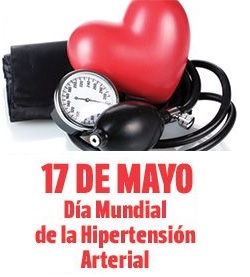
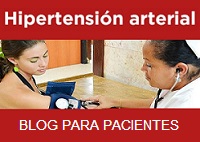


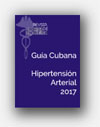
![Glosario: hipertensión [Hipertensión arterial en la atención primaria de salud. 2009]](http://temas.sld.cu/hipertension/files/2016/04/Glosario-e1541006177950.jpg)
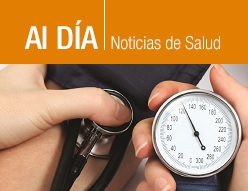
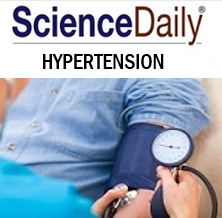


Comentarios recientes